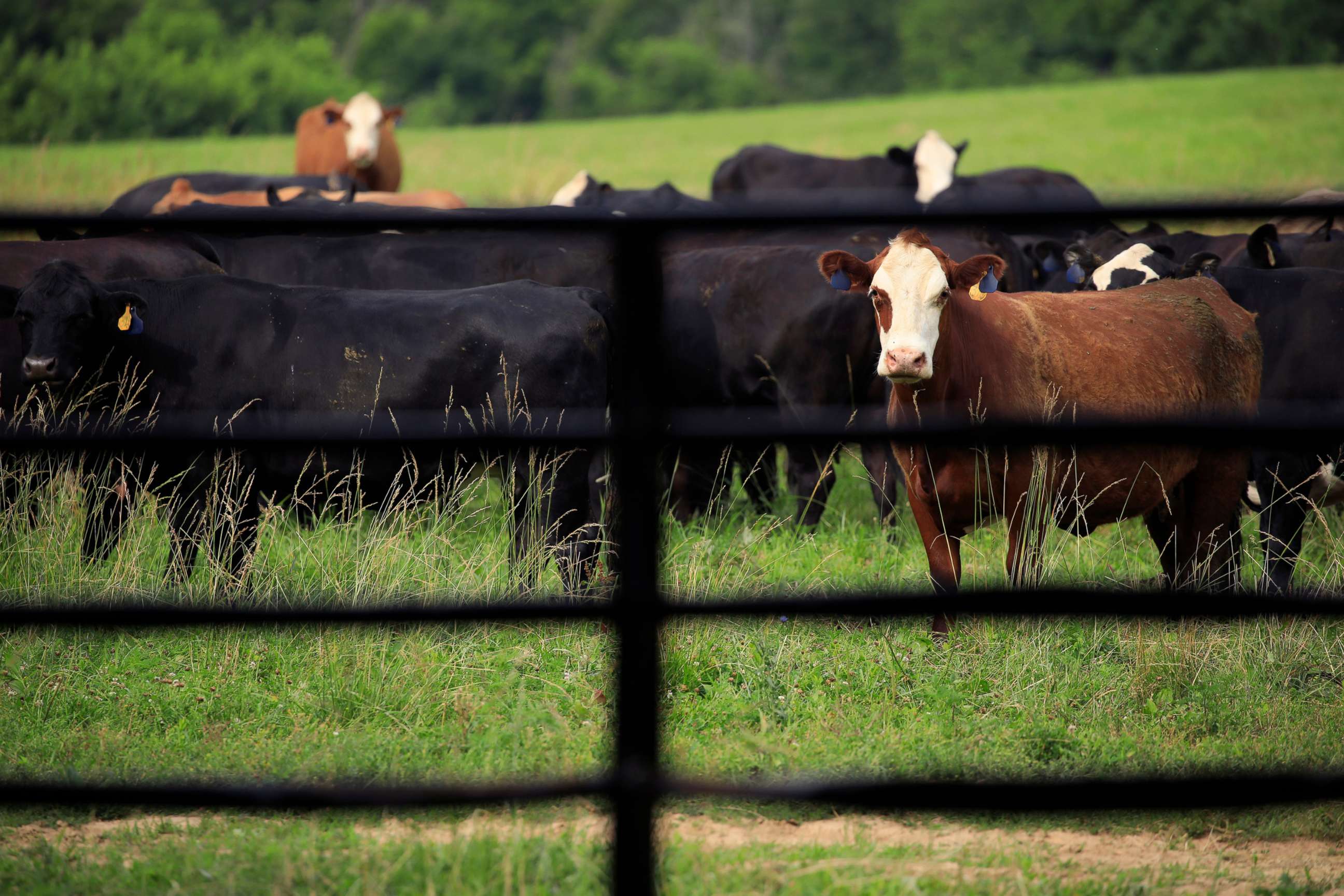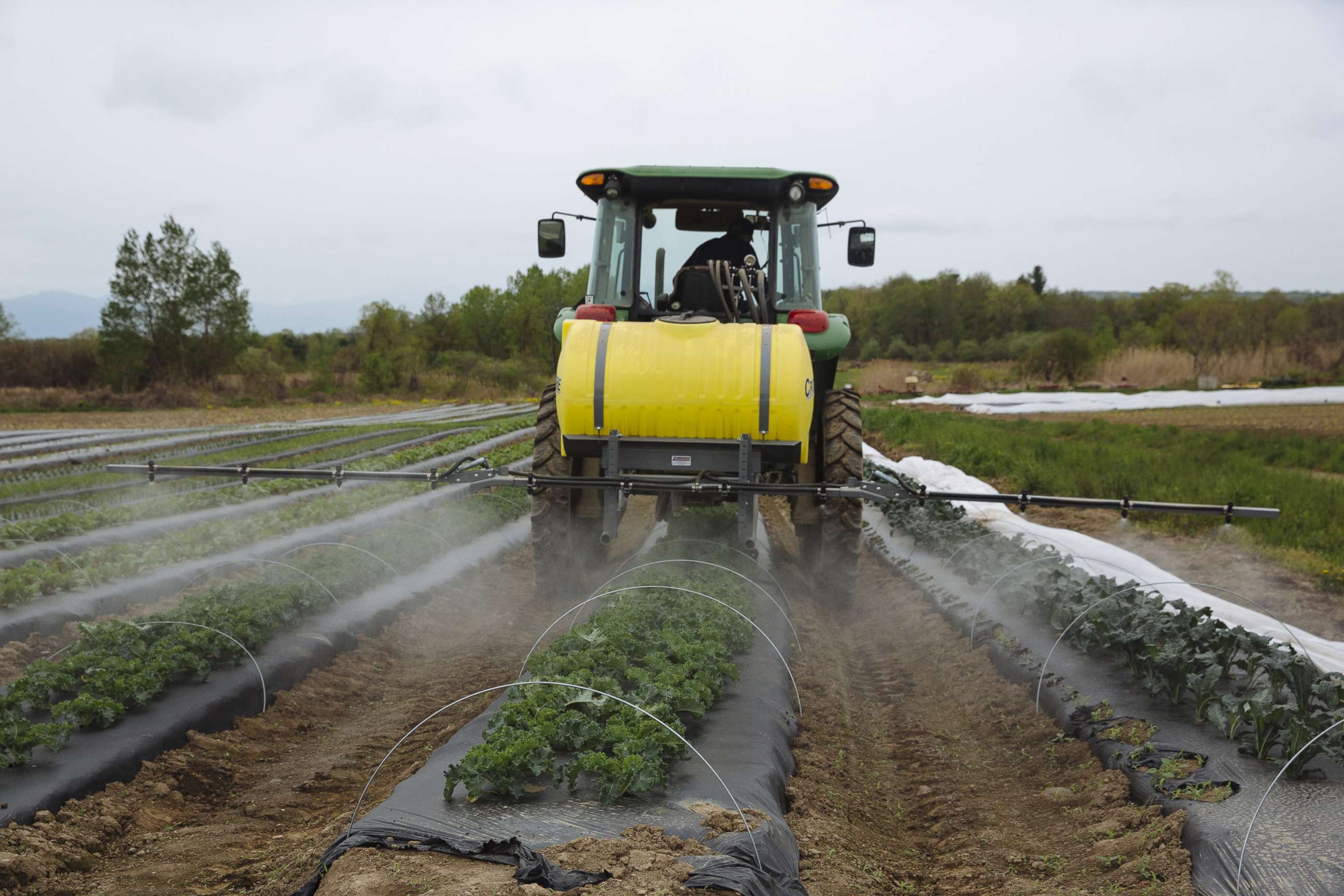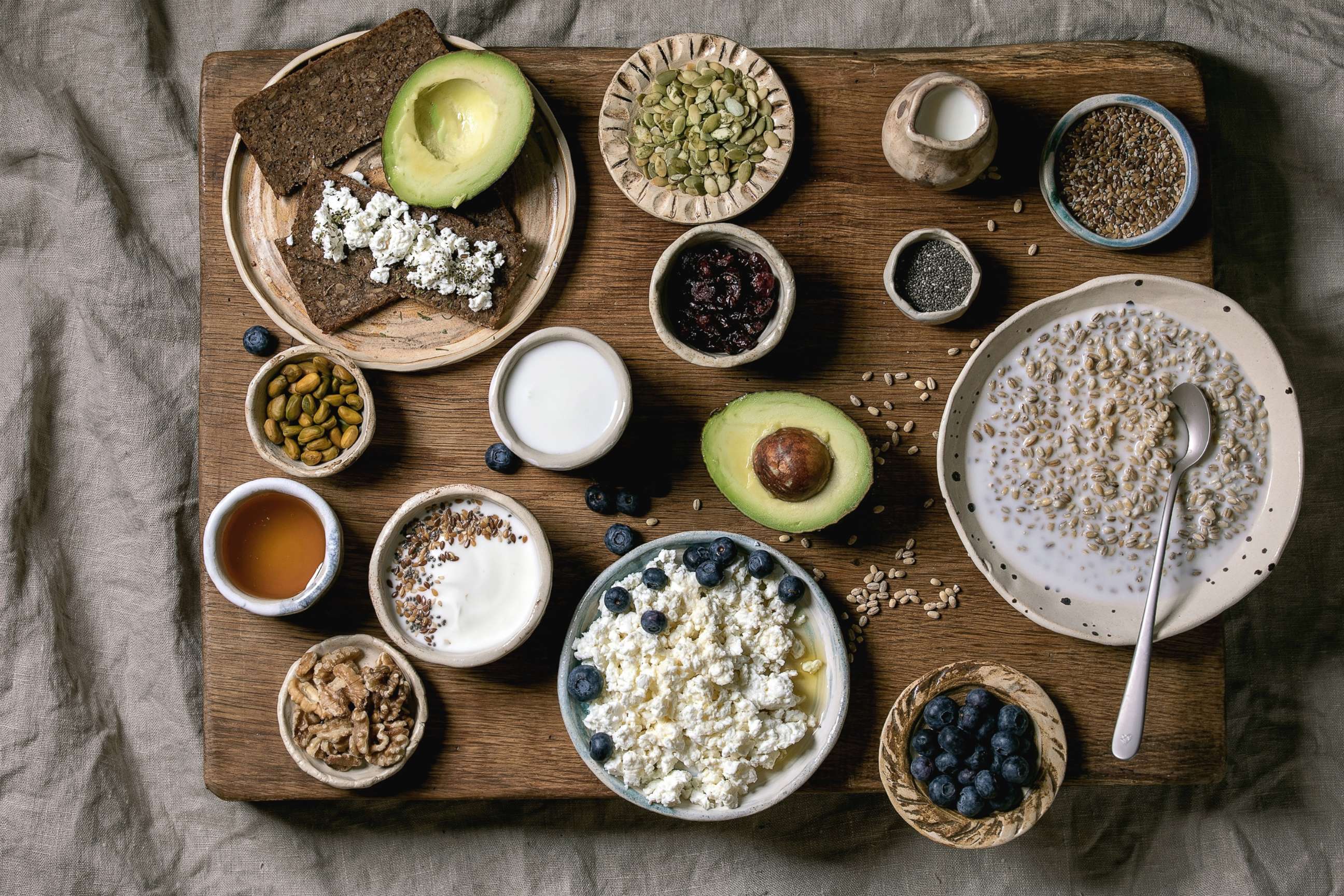Eating sustainably is one of the easiest ways to combat climate change, experts say
Simple switches on a collective level could move the needle on climate goals.
The power of the fork has never been so profound.
As temperatures around the world continue to warm at alarming rates, individuals are asking themselves what lifestyle changes they can make to mitigate greenhouse gas emissions.
The largest impacts lie in voting and purchasing power -- government and industry will need to make significant changes for countries to meet long and short-term emissions goals. Families can also choose to drive a hybrid and power their homes with green energy, which, when done on a collective level, can also significantly reduce energy usage and the natural gas extractions needed to fuel that energy.
But the easiest thing individuals can do in their daily lives to make an impact in the climate fight is simple switches to their diets -- and they don't even have to become a vegetarian or give up animal products altogether to do it, experts say.
"We're not turning them into vegans," Marty Heller, senior research specialist at the University of Michigan's Center for Sustainable Systems, told ABC News. "We're just saying, hey, eat something that is an average [carbon] footprint."
The easiest way to make a meal more sustainable is to eat less meat and more organic, plant-based foods -- the closer they were grown, the better, according to the experts. Certain meals can be high in carbon footprint.

Here is why eating sustainably can aid in the battle against global warming:
Meat consumption is the largest culprit of greenhouse gas emissions in American diets
Planetary boundaries are being challenged by meat consumption, but meat, and beef in particular, represents the majority of the carbon footprint in the American diet, experts say. Globally, the U.S. consumes the second-largest amount of beef per person, just behind Australia, Gidon Eshel, research professor of environmental physics at Bard College, told ABC News.
Researchers at the University of Michigan and Tulane University, who recently surveyed consumers about their diets, found that 56% of the carbon footprint in all diets in the U.S. comes from meat, and 45% of that comes from beef, Heller said. The rest of the footprint comes from the fossil fuels used to transport the products, the land and water used to grow them and the fossil fuels used for pesticides, according to the experts.
For Americans in the highest range of carbon footprint diets, those numbers are closer to 70% food emissions from meat, with 64% of that from beef alone, Heller added.
"So all of that just points to the fact that the amount of meat and in particular, the amount of beef in your diet really makes a difference," he said.
The researchers found that the country could get 10% closer to its climate goals of keeping global warming below 1.5 degrees Celsius if the top 20% of the population that ate the highest carbon footprint diets ate meals that were average in carbon footprint instead, Heller said. For instance, the "average" beef consumption is 51 grams per day, which is the equivalent of eating a quarter-pound burger every other day, Heller said.
A separate study conducted by Heller and his colleagues in June 2020 found that reducing consumption of all animal-based foods by 50% would save 224 million metric tons of carbon dioxide per year, the equivalent to emissions from 47.5 million cars annually.
That could represent 24% of the reduction in emissions necessary to meet climate goals, Heller said.
Even eliminating meat from your diet just one day a week can make a difference. Washington D.C.-based animal advocacy nonprofit Animal Outlook estimates that for every person who observes meatless Mondays, they can reduce their carbon footprint by 8 pounds per day, as much as not driving for two days, and saves 28 land animal and 175 aquatic animals per year.
In addition, a family of four switching to eight vegan meals a week would be the equivalent of switching from a regular car to a hybrid, Heller said. And the younger someone starts, the bigger impact they will have over the long term, Merrigan said.

Why does meat production produce such high amounts of greenhouse gases?
The carbon footprint of a meal increases the higher up the food chain we eat, Heller said.
A large reason why is because of the amount of feed it takes to sustain the animals. Experts often measure the sustainability in feed-to-food ratios, so when you consider how much feed it will take to produce one unit of beef compared to chicken, the difference is vast, the experts said.
The methane that cows emit when they have indigestion are a huge contributor to greenhouse gas emissions as well. The process, called enteric fermentation, releases the heat-trapping gas as a byproduct after it processes the microorganisms in the cow's gut.
The sustainability of food and the efficiency in which it is made is also measured in acres, or how many people can be supported by what is produced in a plot of high-quality cropland, Eshel said. Cows take an incredible amount of land to maintain, even just to grow the seeds to feed them, Kathleen Merrigan, executive director for Arizona State University's Swette Center for Sustainable Food Systems and former deputy secretary of the U.S. Department of Agriculture, told ABC News.
Researchers have found that if those acres were no longer used to produce beef, 65 million additional Americans can be sustained in full, which means eating upwards of 80 grams, or about 2.8 ounces, of protein per person per day, Eshel said. The Recommended Dietary Allowance set by the National Institutes of Health call for .8 grams of protein per kilogram of body weight, so a 150-pound person would need about 55 grams of protein per day.
"At a time when, in some parts of the world, we're looking at deforestation due to people wanting to produce more food, that just, it just doesn't make sense," Merrigan said.
In addition, cows are large animals that take a long time to reproduce, Eshel said his research recently published in scientific journal PLOS Biology found. In one year, a mother cow can produce an average of .8 calves, but a pig raised for pork could produce 22 to 27 piglets in the same amount of time, he added.
"That's the main source of this colossal inefficiency of beef," Eshel said. "And the problem...is that there's really very little that we can do about either the size of the cow or the speed with which she reproduces."

Eat organic and local to reduce carbon footprint in produce, experts say
Organic farming uses about 45% less energy than conventional crop production, but there are "a lot of issues" in how crops are produced in the U.S., Merrigan said.
The European Union is currently pushing its Farm to Fork Strategy, which focuses on reducing chemical fertilizers and the worst of the pesticides currently being used for farming, such as those that release nitrous oxide from the soil.
The U.S. "is not supportive in any way" of the EU's initiative, Merrigan said.
"We are very dependent on fossil fuel industry for agricultural production," she said. "We can make a big difference if we reduce our chemical inputs. We could make a great deal of difference if we just got off of synthetic fertilizers."
Nitrous oxide emissions have increased by 30% since 1980, and two-thirds of those emissions come from agricultural operations, according to a study published in Nature in October.
Currently, only 5.5 million acres in the U.S. are under organic production, and only 6% of all food in the country is produced organically, Merrigan said.
"It's the simplest straightforward way to support ecologically healthy agricultural production," she said.
Purchasing local food reduces the carbon footprint as well by eliminating the transport, Merrigan said, adding that 30% of the fruits and vegetables Americans eat is imported.

What does a sustainable meal look like?
For the experts, the ideal sustainable meal varies.
Eshel turns to his Middle Eastern culture for inspiration. He believes the ideal meal would include a protein that is satiating, such as legumes, lentils and chickpeas, or even soy.
"That would be, the heft of the meal, essentially what meat does to most American meals today -- kind of anchors the meal," Eshel said.
Merrigan swears by eating produce that is organic and in season. In the winter, she enjoys root vegetables, while in the summer she's reaching for blueberries and raspberries.
"We've all become accustomed to be able to have raspberries 365 a year," she said, but that luxury comes at a cost.
Merrigan added that she treats meat as the "condiment" in her meal, rather than "center stage."




